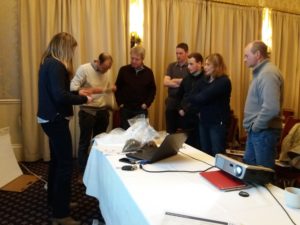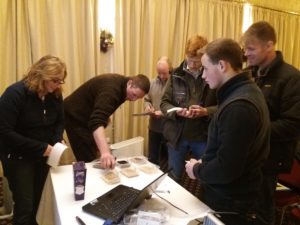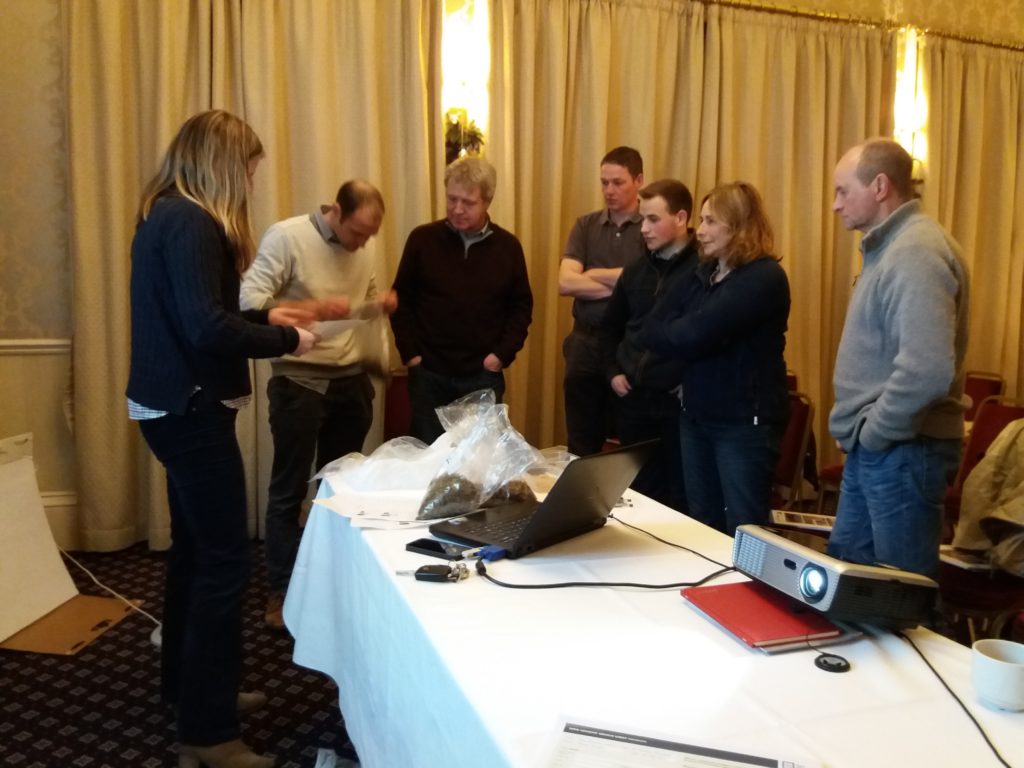New Entrants to Farming: Livestock Health and Nutrition (Forfar) – Event Summary
13 December 2017 This was the 6th meeting of the Forfar New Entrants to Farming group where the main focus for the night was on livestock health and nutrition. Speakers on the night were Karen Stewart, SAC Consulting Nutritionist, and Tim Geraghty, SAC Consulting Vet with Stacey Hamilton, also from SAC Consulting, acting as meeting chair and facilitator.
This was the 6th meeting of the Forfar New Entrants to Farming group where the main focus for the night was on livestock health and nutrition. Speakers on the night were Karen Stewart, SAC Consulting Nutritionist, and Tim Geraghty, SAC Consulting Vet with Stacey Hamilton, also from SAC Consulting, acting as meeting chair and facilitator.
What Do The Vet Labs Do?
First up was Tim Geraghty who explained to the group what the SAC vet labs actually do and the importance behind investigating health problems in your livestock. One of the main topics that came out of Tim’s presentation was post mortems and why to do them. The group found this of great value and it generated a lot of discussion into the different types of lab analysis available for post mortems and difference diagnoses reached from the tests.
There was a great in-depth discussion by the attendees on reasons why they do and don’t have post mortems carried out on their deadstock and the experiences they have had in relation to their livestock’s health. It provided the group with the chance to ask Tim, as a Veterinary Investigation Officer, the ins and outs of the lab analysis.
Use of Medicines
The other topic covered in relation to animal health was the use of medicines and antibiotic/anthelmintic resistance. This topic was of great interest to the group and proved to be a good talking point and source of discussion of when to treat and when not to treat and the effective use of wormers sparked a lot of questions.
Animal Nutrition
 Following on from Tim, Karen Stewart spoke about livestock nutrition and how to match silage quality up to the most appropriate class of stock. Karen started off her session with the group by asking and discussing the use of body condition scoring in livestock as few people, even now, that do this for rationing feed. During this topic Karen gave the group a challenge on their feed knowledge where she laid out 10 different feeds, some of which were by-products) and see how many the group could identify.
Following on from Tim, Karen Stewart spoke about livestock nutrition and how to match silage quality up to the most appropriate class of stock. Karen started off her session with the group by asking and discussing the use of body condition scoring in livestock as few people, even now, that do this for rationing feed. During this topic Karen gave the group a challenge on their feed knowledge where she laid out 10 different feeds, some of which were by-products) and see how many the group could identify.
Karen then went on to do a group exercise with the attendees on working out the energy requirements for cattle throughout different life and reproductive stages and how then to calculate the amount of silage required for this energy. The group found this really interesting and helpful they had a simple way of getting an energy requirement for a cow and subsequently knowing the approximate silage required in a ration. This session was rounded up with guidelines to stick to for feeding spring and autumn calving cows.
The key messages from the meeting were:
- Post-mortems are a must if you have any suspicions or questions over cause of death in livestock.
- Medicines should be used sparingly on farm and only if required, to help reduce resistance i.e. do faecal egg counts on stock to see if worming is actually required.
- Analysing your forage is essential to know you are feeding the right amount.
- Body condition score and feed as appropriate to condition.
- While energy is most important, protein deficiency can impact on calf birth weight, absorption of colostrum and therefore calf survival.
Sign up to the FAS newsletter
Receive updates on news, events and publications from Scotland’s Farm Advisory Service

